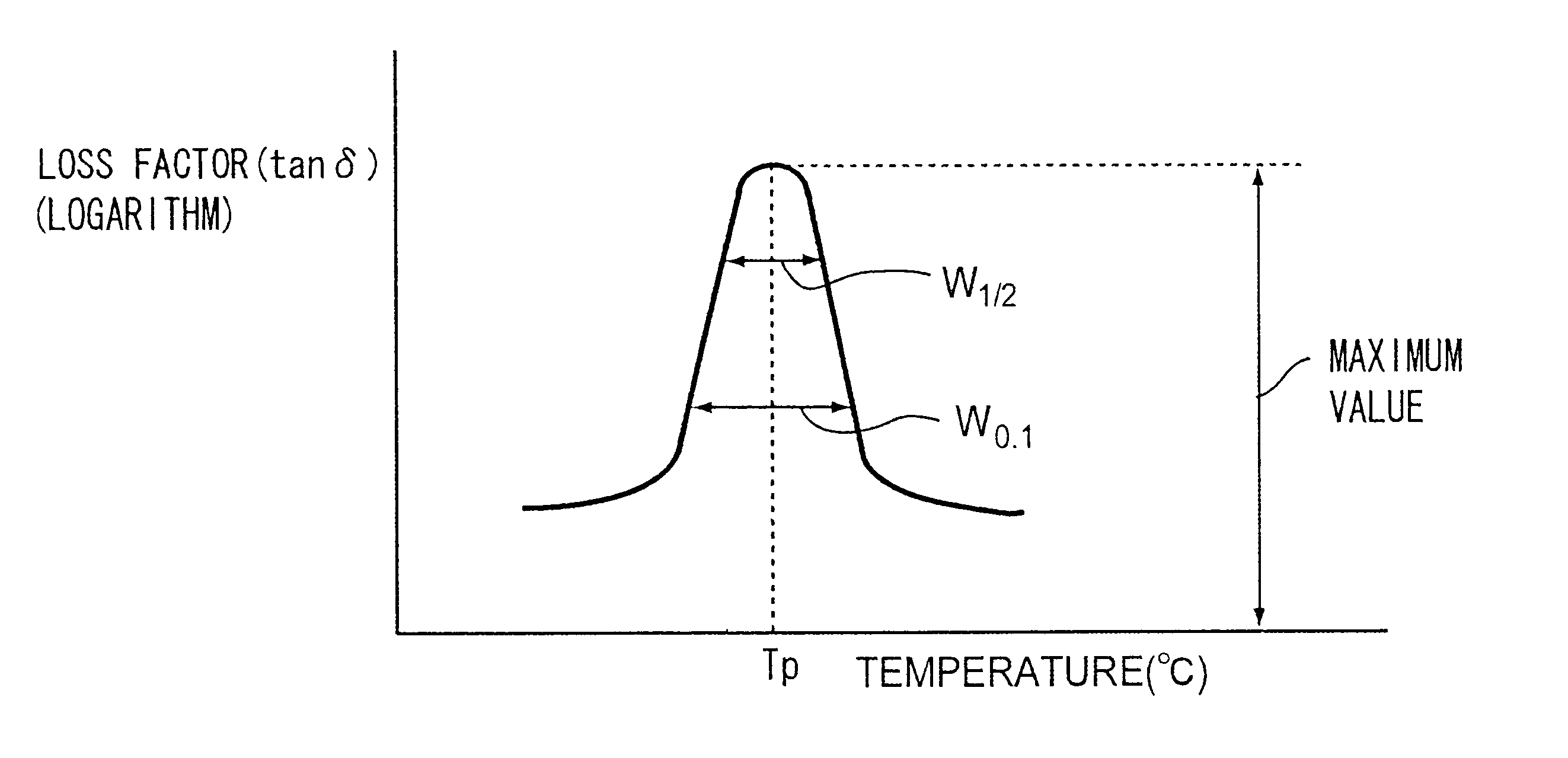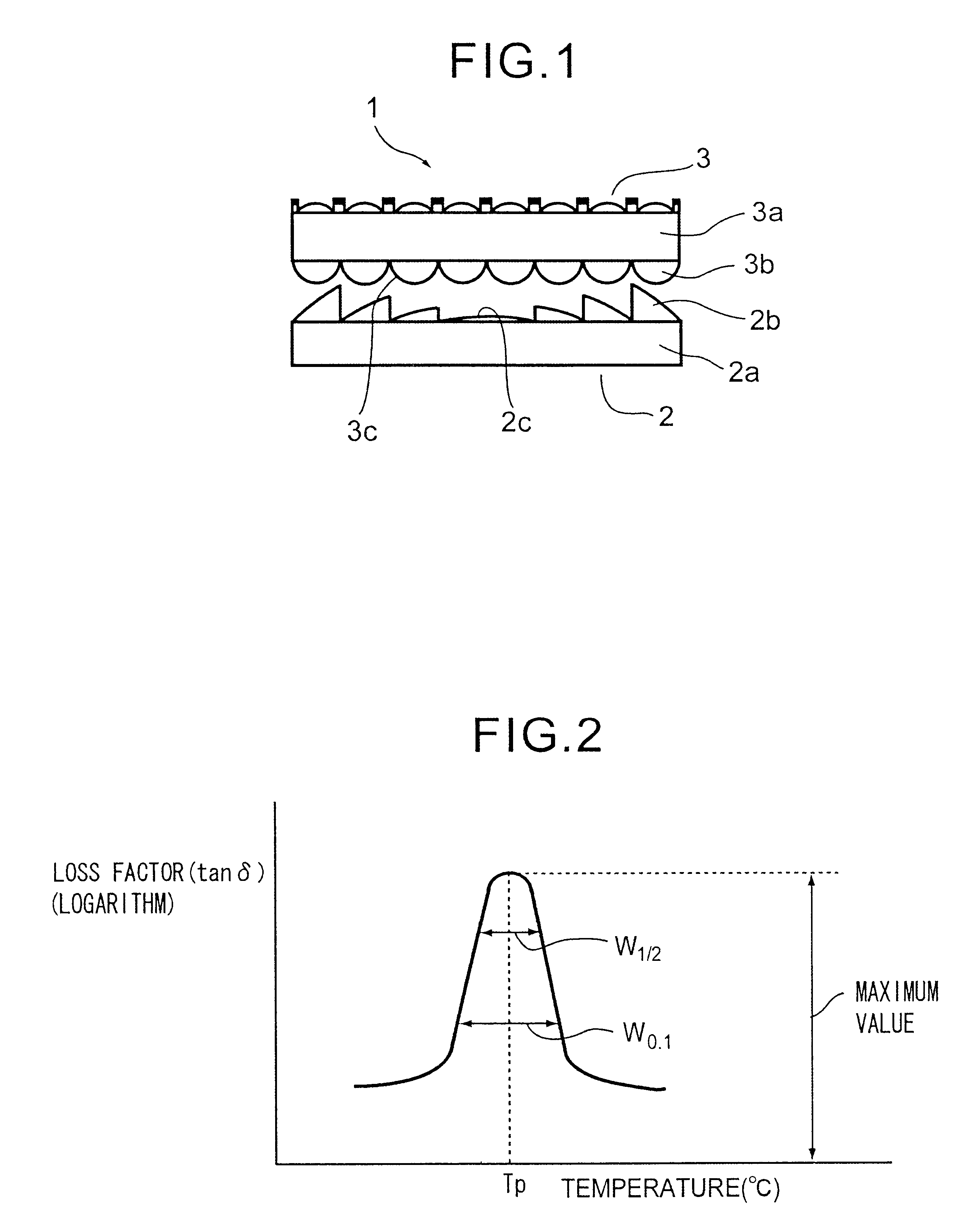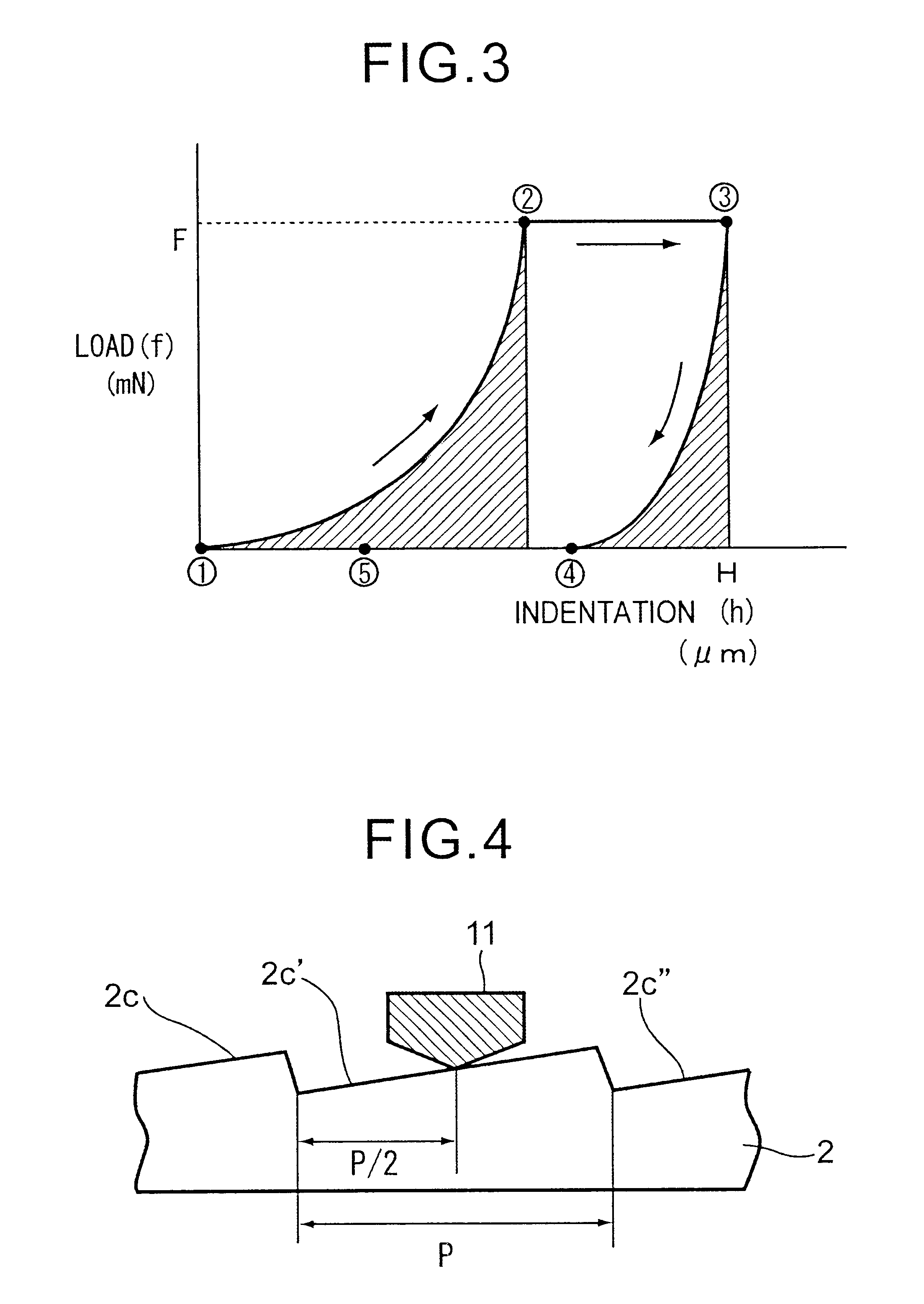However, simply increasing that
hardness results in that, when handling, or sheet-
cutting, the lens becomes likely to
chip off, and thus conversely causes a problem.
In addition, although the
hardness of resin in general is closely related to the
glass transition temperature (Tg), excessively decreasing the
glass transition temperature (Tg) of resin becomes unable to obtain the
rubber elasticity, with the result that applying a pressure causes the resin to get plastically deformed.
Conversely, regarding the method of increasing the glass
transition temperature, although it is advantageous in terms of the enhancement of the
refractive index, excessively increasing the glass
transition temperature makes the rigidity excessively high, which may also cause a curving of the lens sheet.
Also, the optical element is not always used at normal temperature.
When used in optical appliances or display devices, the production of heat from within the appliance or device can leave the optical element exposed to a high temperature.
At these high temperatures, the above-described drawbacks will become more serious.
However, although the half value width is indeed effective when the configurations of the crests have a resemblance in shape, in a case where the configuration of the crest does not have a resemblance, the difference between each two of the configurations of the crests cannot be sufficiently expressed.
In a case where less than 16.degree. C., since in the vicinity of the maximum value of the loss factor the behavior of the resin composition is excessively sensitive to the change in temperature, this case is unpreferable from the standpoint of manufacture or from the standpoint of keeping the product in custody.
Also, when exceeding 31.degree. C., although in the vicinity of the maximum value of the loss factor the behavior of the resin composition ceases to become sensitive to the change in temperature even if the temperature changes, the configuration of the optical element surface of the optical element formed with this resin composition for production of an optical element becomes likely to be damaged by the pressure that, when the optical element is in use, is applied to it.
In addition, also, when the optical element is piled up in the state of its being made horizontal, the configuration thereof becomes likely to be crushed and, therefore, this case is not preferable from the standpoint of handling such as the keeping in custody, transporting, etc. of the optical element.
C. In a case where less than 13.degree. C., regardless of the value of the previously determined 0.1 width, in the vicinity of the maximum value of the loss factor, the behavior of the resin composition is excessively sensitive to the change in temperatu
tion. Although in the vicinity of the maximum value of the loss factor the behavior of the resin composition ceases to become sensitive to the change in temperature even if the temperature changes, when the temperature T.sub.P is higher than normal temperature, the configuration of the optical element surface of the optical element formed with this resin composition for production of an optical element becomes likely to be damaged by the pressure that, when the optical element is in use, is applied
to it. In addition, also, when the optical element is piled up in the state of its being made horizontal, the configuration thereof becomes likely to be crushed and, therefore, this case is not preferable from the standpoint of handling such as the keeping in custody, transporting, etc. of the optical e
lement. However, when the T.sub.P is lower than normal temperature, the resin composition conversely tends to become unlikely to
When less than 18.degree. C., the difference of the glass
transition temperature from normal temperature (25.degree. C.) is small and therefore the resin composition becomes always unstable in terms of its behavior.
When more than 80.degree. C., if viewing from the thermal point of view, in a case where the resin composition is used in the way of being incorporated into an optical appliance or
display device, it can
resist the temperature to which it is exposed, the
hardness of it becomes excessively high.
As a result, when it is handled or machined, a chipping-off of it occurs, or, when the fellow optical elements are disposed closely to each other, that hardness in excess also becomes a cause of the combined structure getting curved.
ows. Namely, because the optical element formed with the resin composition
ranging from a temperature higher than 47.degree. C. to a temperature lower than 52.degree. C. has a temperature which almost coincides with the temperature in the temperature range within or over which the optical appliance or the
display device is actually used, there is the practical demerit that the optical element is liable to be affected by the increase in th
This results in the drawback that it becomes difficult to avoid being damaged due to the wear.
On the other hand, when the maximum value of the loss factor exceeds 1.2, the
mechanical strength at the time of a high temperature decreases with the result that the resin composition comes to have the drawback of its becoming likely to be deformed.
 Login to View More
Login to View More 


